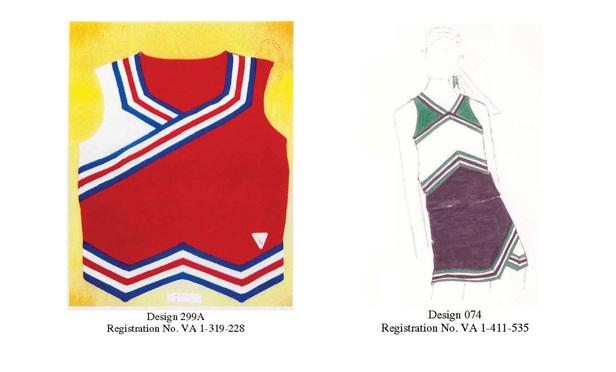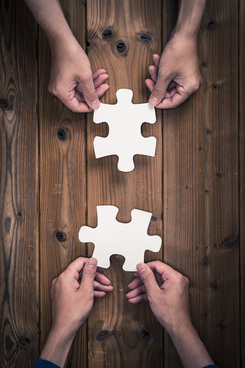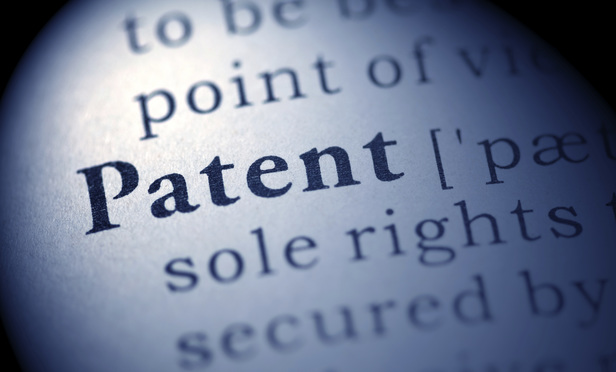Anthony S Volpe

January 05, 2018 | The Legal Intelligencer
Identifying the Correct Venue for Patent Litigation After 'TC Heartland'The identification of the proper venue for commencing a patent infringement or declaratory judgement action was rather straight forward for a number of years.
By Anthony S. Volpe and Emily Denisco
8 minute read

September 05, 2017 | The Legal Intelligencer
Sovereign Immunity as Applied by PTAB in Inter Partes ReviewsWith the increasing presence of various state arms, like universities and hospitals, involved in research and the licensing of technology, particularly patents, cases concerned with how to apply sovereign immunity to those state related entities are receiving more attention. This increased attention is very evident in the Inter Partes Review proceedings filed in the U.S. Patent and Trademark Office (USPTO) as an alternative to patent litigation in Article III courts.
By Anthony S. Volpe and Kevin P. Proud
18 minute read

July 05, 2017 | The Legal Intelligencer
Patents, Trade Secrets and Inevitable Disclosure DoctrineThroughout time industries have developed techniques and processes that are believed to be essential elements that contributed to the company's success. For almost as long, companies have sought and devised ways to protect those techniques and processes that constituted the company's intellectual property. Many companies turned to federal patent protection, others chose to treat the information as trade secrets and others chose to use contractual obligations to protect their intellectual property.
By Anthony S. Volpe and Bradley M. Brown
8 minute read

May 03, 2017 | The Legal Intelligencer
Copyright Infringement Suits Are Becoming FashionableDesigners of haute couture fashion have long been troubled by the inability to protect their designs, and the speeds at which designs can be copied now have added to their frustrations. The root of the problem for many years was the U.S. copyright law, which was considered to prohibit enforcement of a copyright in wearable fashions. The Copyright Act, 17 U. S. C. Section 101 et seq., limited copyright protection for "pictorial, graphic, or sculptural features" of "a useful article" to features that "can be identified separately from, and are capable of existing independently of, the utilitarian aspects of the article."
By Anthony S. Volpe and Tom Gushue
15 minute read

February 28, 2017 | The Legal Intelligencer
Patents and the AIA in a US Supreme Court With GorsuchPatents have had unusual attention from the U.S. Supreme Court recently. In addition to high-profile cases like Alice v. CLS Bank International, 134 S. Ct. 2347 (2014), that dramatically changes the landscape for technology-based patents, Samsung v. Apple, 137 S. Ct. 429, 431 (2016), that has the potential to dramatically change the landscape for damages in design patent infringement, and Life Technologies v. Promega, 2017 U.S. LEXIS 1428 (U.S. Feb. 22, 2017), which tests the limits of liability under U.S. law for infringement abroad, the court is poised to consider whether the post-grant procedures of the America Invents Act (AIA) are constitutional.
By Anthony S. Volpe and Ari S. Indik
19 minute read

January 17, 2017 | The Legal Intelligencer
Alternate Dispute Resolution Provisions With Early InterventionAlmost no one disputes that litigation is expensive and time consuming. Clients recognize that litigation expends bottom line dollars and consumes executive time; lawyers recognize that litigation, regardless of how efficiently it is conducted or how successfully it ends, is often viewed as being conducted for the benefit of the lawyers; and, judges always want to know why the matter is consuming court time and effort when it should be settled. Notwithstanding this seeming census on the importance of alternate dispute resolution, almost all efforts to resolve a dispute come into focus after the commencement of litigation. In many instances, the alternate resolution efforts come well into the litigation and after the completion of fact discovery. This typically results in increased party hostility and a desire by both parties to recover the sunk cost as part of any settlement.
By Anthony S. Volpe
13 minute read

January 04, 2017 | The Legal Intelligencer
Doing Business in the New First-To-File Patent EnvironmentMany small business entities find that they occasionally have a new product or process for which they wish to seek patent protection. Some of those small businesses may have had some prior experience with the patent process. Unfortunately, many of the prior patent laws changed with the advent of the America Invents Act (AIA). The AIA made fundamental changes in the consequences associated with a business engaging in market activities prior to the filing of a patent application and many commercial entities that occasionally pursue patent protection have not made the necessary adjustments in their internal procedures.
By Anthony S. Volpe
12 minute read

November 01, 2016 | The Legal Intelligencer
Patent Infringement Complaints After the Change in RulesFor many years prior to Dec. 1, 2015, patent infringement complaints were exempt from the pleading requirements of Federal Rule of Civil Procedure 8. Prior to the change, FRCP 84 provided that infringement pleadings that complied with FRCP Form 18 automatically satisfied the pleading requirements of FRCP 8(a) and were effectively immunized against an attack regarding the sufficiency of the pleading. Compliance was relatively simple since Form 18 only required a direct infringement complaint to set forth: (1) an allegation of jurisdiction; (2) a statement that the plaintiff owns the patent; (3) a statement that the defendant has been infringing the patent by making, selling, or using a device embodying the patent; (4) a statement that the plaintiff gave the defendant notice of its infringement; and (5) an injunction demand. (See McZeal v. Sprint Nextel, 501 F.3d 1354, 1356-57 (Fed. Cir. 2007); and K-Tech Telecommunications v. Time Warner Cable, 714 F.3d 1277, 1283 (Fed. Cir. 2013).) The Dec. 1, 2015, federal rules changes brought a sea change to the requirements for pleading patent infringement. With the passing of Form 18 into legal history, patent infringement complaints are subject to the pleading requirements of FRCP 8; however, the courts are struggling to deal with the change and how to apply it to pre-existing complaints. This article presents a snapshot of the cases dealing with transiting to and defining the new requirements.
By Anthony S. Volpe and Joseph P. Mathew
17 minute read

September 06, 2016 | The Legal Intelligencer
Leveraging the DTSA with Nonpublication of Pending US Patent ApplicationsNumerous articles and commentaries following the enactment of the Defense of Trade Secrets Act (DTSA) recognized the benefits of the DTSA, but they have not addressed the benefits of using the DTSA together with the U.S. Patent and Trademark Office (USPTO) patent application process to extend the available option of trade secret protection instead of patent protection.
By Anthony S. Volpe
12 minute read

May 04, 2016 | The Legal Intelligencer
The Unforeseen Dangers of Good-Faith Business DisclosuresMany companies, particularly small businesses and closely held family-owned companies, develop commercial relationships with other companies over a course of repeated dealings that become more like commercial friendships. Like personal friendships, these commercial friendships have an unspoken level of trust where unguarded conversations become more frequent. While this more relaxed relationship is most likely helpful in the day-to-day dealings between the companies, it can result in unforeseen problems when there is a disclosure of confidential or propriety information without any formalized agreement about how the discloser and recipient are to handle the disclosed information. The issues of deciding when information is important and should be subject to some formal agreement and the nature or form of that formal agreement the discloser should request are not obvious.
By Anthony S. Volpe
14 minute read
Trending Stories
- 1Freshfields Name Change Becomes Official
- 2Lawyers on TikTok Seek the Right Mix of Substance and Levity
- 3Chair of Montgomery McCracken Decamps for Morgan Lewis
- 4You Too Can Be a Programmer: Connecting to Legal Platform APIs With Generative AI (Part 2)
- 5Court of Appeals and Appellate Division As Courts of First Instance
More from ALM
- Scan In Progress: Litigators Leverage AI to Screen Prospective Jurors 1 minute read
- Legal Speak at General Counsel Conference East 2024: Match Group's Katie Dugan & Herrick's Carol Goodman 1 minute read
- Legal Speak at General Counsel Conference East 2024: Eric Wall, Executive VP, Syllo 1 minute read



